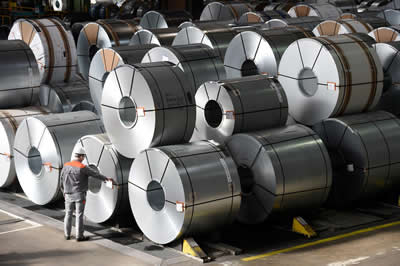Written byPamela Coke-Hamilton, Director, Division on International Trade and Commodities (UNCTAD)
In a year defined by retaliation and counter-retaliation, resulting in a trade impasse between the United States and China, more than half of the two nations’ bilateral trade has been impacted by succeeding escalating rounds of tariffs. Who is winning or losing depends on whom you ask, but regarding trade flows, it’s certainly neither of the leading contenders.
The saying “it’s good to fish in troubled waters” could apply to some bystander nations to the tensions between the US and China.
As trade veers away from the troubled zone, a handful of countries will profit by capturing some of the diverted exports of the trade giants. This effect could be even more pronounced if the US increases tariffs to 25% on 1 March.

Recent UNCTAD estimations, which include the potential March hike, show that most of the US-China trade affected by the increased tariffs will divert to third countries. For example, of the $250 billion of Chinese exports subject to US tariffs, 82% will be captured by firms in third countries, about 12% will be retained by Chinese firms, and only about 6% will be kept by US firms.
Similarly, of the approximately $110 billion of US exports subject to China’s tariffs, about 85% will be captured by firms in other countries, US firms will retain less than 10%, while Chinese firms will only keep about 5%. The results are consistent across different sectors, from machinery to wood products, furniture, communication equipment, chemicals and precision instruments. This suggests that while unilaterally imposed tariffs are very effective in deterring trade from rival countries, they are very ineffective in protecting domestic firms, both in China and the US.
Among those likely to profit from the US-China trade collision, the European Union leads the pack. The EU is likely to capture about $70 billion of US-China bilateral trade ($50 billion of Chinese exports to the US, and $20 billion of US exports to China). Japan, Mexico and Canada will capture more than $20 billion each, while other countries will get substantially less.
These numbers may not be significant relative to global trade, which stood at about $17 trillion in 2017. However, for some countries, the export increase may be substantial. For example, Mexico would be able to capture about $27 billion of US-China trade, which represents about 6% of the country’s total exports. Likewise, Australia, Brazil, India, Philippines, Pakistan and Viet Nam may also see substantial increases relative to their total exports.
But in a world of global value chains, the wrangling of the trade giants is likely to have a domino effect beyond the countries and sectors targeted. Tariff increases penalize not only the assembler of a product, but also its suppliers along the chain. The high volume of Chinese exports affected by US tariffs is likely to hit East Asian value chains the hardest, which we believe could contract by about $160 billion.
In contrast, the effect on North American value chains is expected to be milder. While they will be negatively affected by Chinese tariffs, this impact would be almost offset by the reallocation of production from China into the North American region (US, Mexico and Canada). However, other regions will clearly profit, particularly Europe, whose trade related to value chains could expand by $90 billion. Regional value chains in other Asian countries and South American countries are also likely to benefit, while in Africa much less so.
Nevertheless, to what extent global value chains will shift across regions will ultimately depend on whether the tariffs are perceived as temporary or permanent. The spectre of a long trade war could have significant implications on global investment flows, and indeed on employment and growth, in both developed and developing countries.
An accepted truism is that conflict creates profit. However, it is also true that such conflicts have spillover effects, with severe consequences for everyone. The current trade tensions are a sword of Damocles hanging over the global economy and development prospects in 2019, as underscored by a recent United Nations report on the global economic outlook.
The current trade tensions are also a symptom of discontent. The fact that some negotiations and the settlement of ongoing trade disputes are taking place at a bilateral level, rather than within the World Trade Organization, signals the weakening of the multilateral trading system.
The impact of trade tensions goes well beyond that of reshaping international trade flows. They also hinder cooperation efforts to find solutions to global challenges, from improving the multilateral trading system to achieving the Sustainable Development Goals adopted by the international community in 2015. In the long run, this will be the most damaging effect of all. Nobody will win.
Read the original article on www.weforum.org
Follow them: @wef on Twitter | World Economic Forum on Facebook



